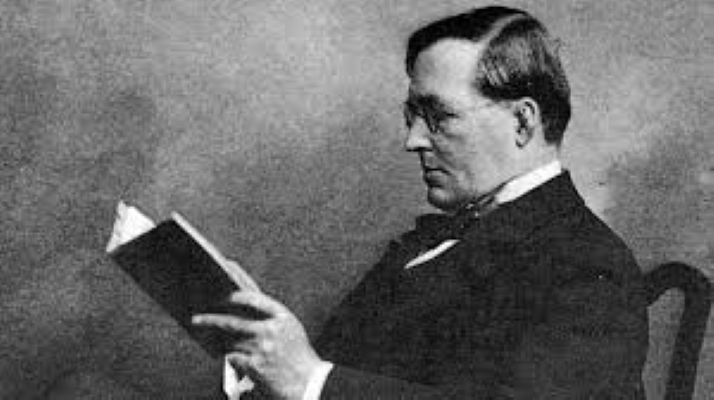Montague Rhodes James (M.R. James) was a medievalist scholar and an author. He was very famous because of his ghost stories. Some of his ghost stories are still considered as one of the best.
James was also interested in antique, so many of his story’s plots have his antiquarian interests. He is considered the founder of “antiquarian ghost stories”.

Early Life and Death of M.R. James
James was born in 1862, August 1st, in Goodnestone, Kent, England. His parents were Herbert James, a clergyman, and his mother was Mary Emily, she was from an army background.
In 1873, during September, he started studying in Temple Grove, which was one of the best schools of that time. Later, in 1876, he joined Eton College and spent the next six years there. In 1879, He is known to have translated Book of Baruch to English
In 1884, James went to France to study. There he studied classics and staged a play called The Birds. The show became very successful soon. He used to write ghost stories during his college time and around Christmas he would read his ghost stories to his friends and other people. He is said to be a good actor because of the way of his storytelling.
In 1918, he was Provost of the Eton College, he also interviewed a young boy who later played the role of M.R James in a television show, boy’s name was Christopher Lee. In 1930, he was awarded the Order of Merit.
Famous works of M.R. James
Ghost Stories
The first time James had a taste of ghostly was from a toy from “Punch and Judy set”. It was a tall figure made of cardboard and dressed in all white. He said that because of that figure he often had nightmares. James’s stories had a touch of medieval and antiquarian things which made the stories even better.

Best known Ghost Stories by M.R. James
- In 1904, James published a series of ghost stories titles Ghost Stories of An Antiquary, which had 8 stories.
- He published 7 more stories in 1911, and the title was More Ghost Stories.
- Eight years later in 1919, A Thin Ghost and Others came out, it had 5 stories.
- And the last was A Warning to the Curious and Other Ghost Stories, released in 1925 and consisted of 6 stories.
- After all these stories, he wrote a tale and published in 1928, Wailing Wale, by Mill House Press at Stanford.
Many of James’s stories included Suffolk in their plot like “Rats and A Vignette” in Livermore, A Warning to the Curious in Aldeburgh, and ‘Oh, Whistle, and I’ll Come to You, My Lad’ in Felixstowe.
Story-telling method of M.R. James (Jamesian)
According to James, the story should always include some things like the main character of the plot should be from a town, ancient or countryside, a conservative scholar man. And there should also be a cursed old book or something like that which starts the whole ghost chasing.
This method of James was soon known as Jamesian, and all the classics tales by James includes all the points he described in his story-telling method. These novels are generally known as Jamesian classics.
James said, “Another requisite, in my opinion, is that the ghost should be malevolent or odious: amiable and helpful apparitions are all very well in fairy tales or in local legends, but I have no use for them in a fictitious ghost story.”
Also, James wanted readers to feel everything like he said: “put the reader into the position of saying to himself, ‘If I’m not very careful, something of this kind may happen to me!’”. He also liked to describe everything in great detail, for example, the look of the ghost, how he kills his prey or eats them, etc.

James’s suggestion to his illustrators to show everything in great detail made many writers uncomfortable, as his books showed too much violence and were very savage. In his book Lost Heart, the ghost would abduct teen children and take out the heart when they were alive.
Other Works
James contributed to many libraries and museums during his career. He arranged libraries of Cambridge University, in a very systematic order. He also wrote some work for art, The Apocalypse. In 1903, he did contribute to Biblica (Encyclopedia) and translated the New Testament.
James became the director of the Fitzwilliam Museum in 1893 and remained till 1908. He secured many manuscripts, paintings, and some portraits.
M.R. James – Opinions on other Literature
James didn’t like contemporary literature, at times he also criticized the work of James Joyce, Lytton Strachey, and Aldous Huxley.
James also spoke against the movement of Irish Home Rule, he showed his dislike ness again Communism. According to A. C Benson, James’s friend, James was “against progress and modernity” and “reactionary”.
James supported the ban of The Well of Loneliness, a novel by Radclyffe Hall, in 1928. He said “I believe Miss Hall’s book is about birth control or some kindred subject, isn’t it? I find it difficult to believe either that it is a good novel or that its suppression causes any loss to literature”.
James’s favourite was ghost stories but he enjoyed Agatha Christie’s detective stories and William Shakespeare’s work.
Legacy
In 1983, Michael Cox published James’s biography, M. R. James: An Informal Portrait. In the biography, he wrote, “One need not be a professional psychoanalyst to see the ghost stories as some release from feelings held in check”.
Many writers were inspired by James’s work and admired his work. There are many television shows which took plot or some part of the plot from James’s work like Whistle and I’ll come to You. His short stories were used to come on the radio too from 1932 to 2019. Some of his works were used for movie scripts and stage.